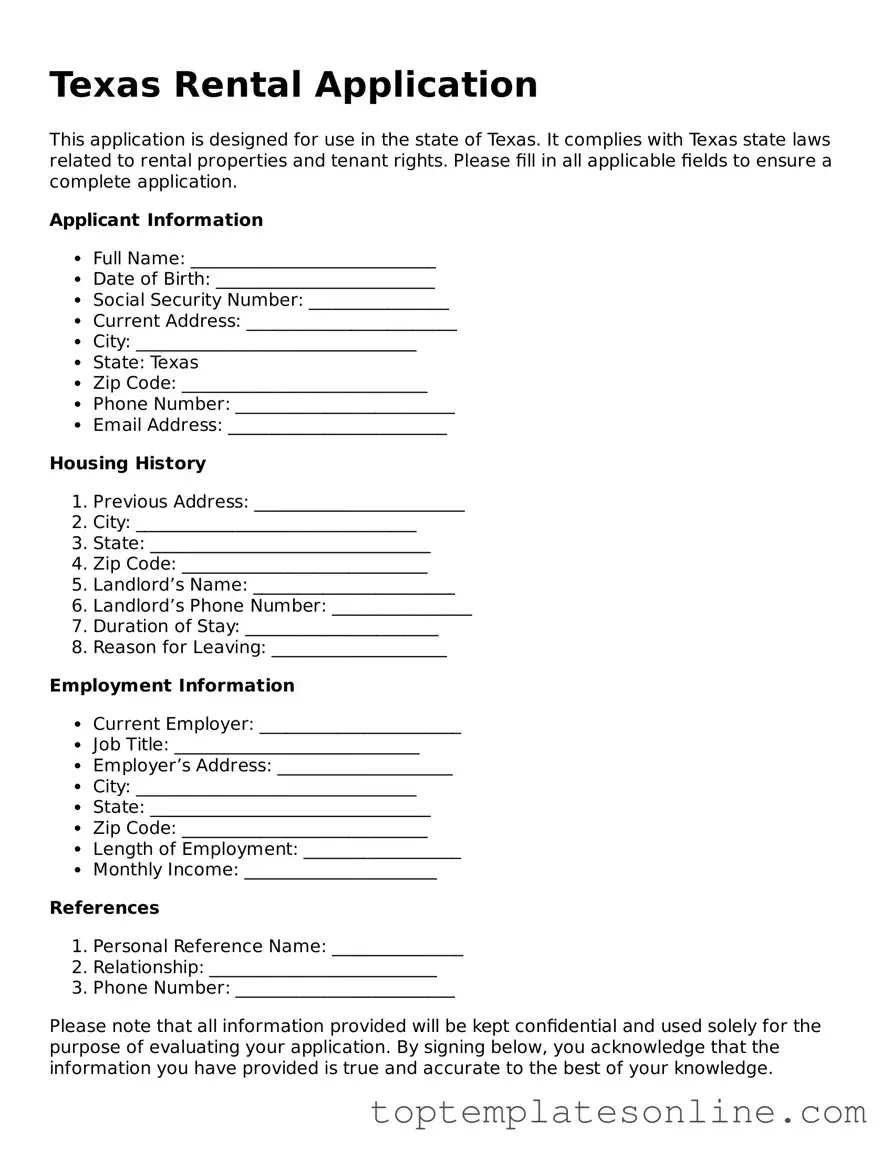Blank Rental Application Template for Texas State
The Texas Rental Application form is a crucial document used by landlords to screen potential tenants. It collects essential information about applicants, including their rental history, employment details, and financial background. Understanding this form can significantly impact your chances of securing a rental property in Texas.
Customize Rental Application Here
